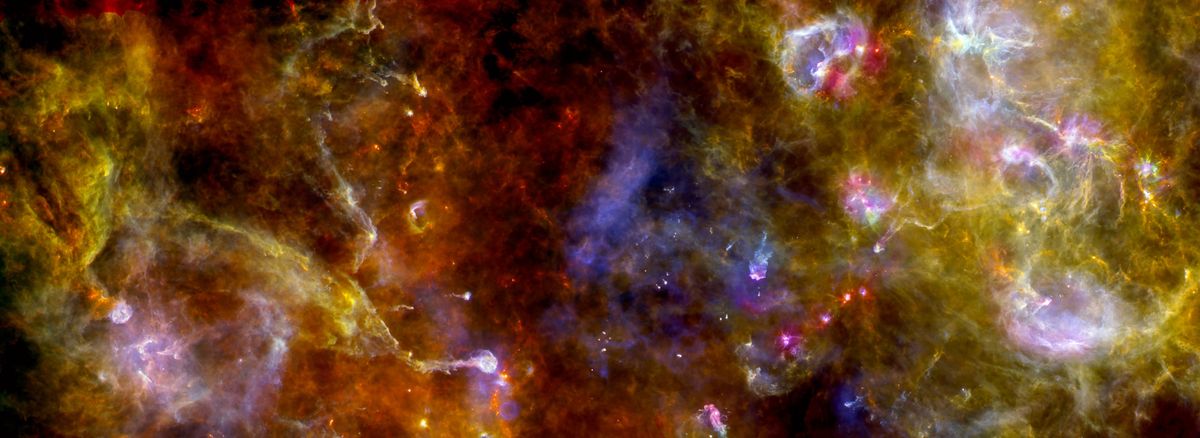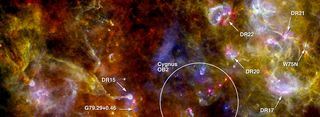Star Factory Blazes Bright in Stunning New Photo

Huge, glowing clouds of gas and dust that will one day collapse to form massive new stars take center stage in a new photo from a European space telescope.
The image, snapped by the European Space Agency's Herschel space observatory, shows Cygnus-X, an extremely active star-forming region about 4,500 light-years from Earth in the constellation Cygnus (The Swan).
The Herschel observatory sees extremely well in far-infrared wavelengths, allowing scientists to seek out and study stellar nurseries like Cygnus-X — places where dense clumps of gas have been gently heated by stars.
In the new photo, bright white areas highlight areas where large stars have recently formed out of such clouds, researchers said. These clumps are particularly evident in the right-hand side of the image, which shows a chaotic network of filaments.
Dense knots of gas and dust mark places where these filaments meet and collapse to form new stars, and where these stars' powerful radiation carves out gigantic bubble-like structures.

In the center of the picture, intense radiation from stars undetected at Herschel’s wavelengths has partly cleared and heated interstellar material, which glows blue in this representation, researchers said. The small red blobs scattered throughout the image map out the relatively cold seeds of future stars.
The ring of material at the bottom of the image was likely ejected by an unseen supergiant star known as G79.29+0.46. On the left, a pillar of gas resembling a swan's neck is prominent.
Sign up for the Live Science daily newsletter now
Get the world’s most fascinating discoveries delivered straight to your inbox.
Herschel, which launched in May 2009, is the largest infrared telescope ever lofted into space. It has a primary mirror approximately 11.5 feet (3.5 meters) wide. Herschel's observations in the far-infrared to submillimeter wavelengths of light allow astronomers to study some of the coldest objects in the universe, researchers said.
Herschel was originally called the Far InfraRed and Submillimeter Telescope, or FIRST. But it was renamed for Britain's Sir William Herschel, who discovered in 1800 that the light spectrum extends beyond what we can see into infrared regions.
Follow SPACE.com for the latest in space science and exploration news on Twitter @Spacedotcom and on Facebook.












